Myasthenia Gravis
What is Myasthenia Gravis?
Myasthenia gravis (MG) is an autoimmune condition, which means that the body’s immune system incorrectly attacks its parts. MG interrupts the communication between nerves and muscles (the neuromuscular junction).
Myasthenia gravis (MG) patients are unable to actively control their muscles. They experience varying degrees of fatigue and muscular weakness. The muscles in the face, eyes, neck, and extremities might not be able to move. MG is a chronic muscle disease. There isn’t a permanent treatment available, However, Different therapies, alone or in combination, can reduce symptoms of myasthenia gravis.
What are the types of myasthenia gravis?
Autoimmune Myasthenia gravis (MG) is the most familiar condition of this neuromuscular illness. Autoimmune Myasthenia gravis (MG) may be:
Ocular: The muscles that produce motion of the eyes and eyelids are weakened. Your eyelids may droop, or you may not be capable of maintaining your eyes open. Some patients have double vision. Eye weakness is frequently the first symptom of Myasthenia gravis (MG). Almost half of the patients with ocular Myasthenia gravis (MG) become into a generalized state within two years of the first symptom.
Generalized: Muscle weakness involves the eye and further body regions like the neck, face, legs, arms, and throat. You may discover it hard to speak or swallow, stand up from a seated position, raise your arms over your head, walk long lengths, and climb stairs.
Epidemiology
The incidence rate of Myasthenia gravis (MG) is approximately 5 to 30 patients per million person-years, and the majority rate is between 10 to 20 patients per 100,000 population. There is equal geographic allotment in the incidence and majority of Myasthenia Gravis (MG) in both grown-ups and kids and juvenile Myasthenia gravis (MG) that begins before the age of 18 years is nearly 10% of all patients of Myasthenia Gravis (MG).
Its majority has been rising over the past several decades secondary to adequate awareness, recognition, and raised survival, its not a linear growth, the age of onset is indicated by a bimodal allotment with an early incidence rise in the 2nd to 3rd decades involving young females and a late rise in the 6th to 8th decades that is mainly seen in males
What are the symptoms of myasthenia gravis?
The major symptom of Myasthenia gravis (MG) is weakness in the voluntary skeletal muscles, which are muscles under your command.
The failure of muscles to contract generally occurs because they can’t react to nerve impulses. Without accurate transmission of the impulse, the communication between nerve and muscle is stopped, and weakness outcomes.
Weakness associated with Myasthenia gravis (MG) generally gets more harmful with more activity and enhances with rest. Symptoms of Myasthenia Gravis (MG) may present through the subsequent body regions.
Eyes
MG can generate dropping of the eyelids, as well as double or blurry eyesight. You may also feel general weakness in your eye muscles.
Face
In extra to facial paralysis, Myasthenia gravis (MG) may conduct modifications in your facial expressions.
Throat
When MG involves the muscles of the throat, you may feel:
- problem in talking
- problem in breathing
- a problem in swallowing or chewing
- hoarse voice
- weakness in your neck, making it hard to maintain your head up
Chest
When Myasthenia gravis (MG) involves the muscles of the chest region, you may feel extreme and potentially life-threatening symptoms:
respiratory failure, induced by weakness in the diaphragm and chest muscles that may conduct to myasthenic crisis and is regarded as an emergency
Arms and legs
Myasthenia gravis (MG) can also involve the muscles in your arms and legs, showing the subsequent symptoms:
- fatigue
- weakness in your hands, fingers, and arms
- general weakness in your legs
- difficulties in walking up stairs or raising things
Not everyone will have every symptom, and the degree of muscle weakness can alter from day to day. The severity of the symptoms generally rises over time if left untreated.
What causes myasthenia gravis?
Myasthenia gravis (MG) is an autoimmune condition. For unknown causes, the body’s immune system strikes itself.
In-person with a healthy immune system, nerves, and muscles communicate a piece like a tiny baseball game:
Nerves (the pitcher) transmit signals to muscles (the catcher) across a synapse (connection) known as the neuromuscular junction. To communicate, nerves discharge a molecule known as acetylcholine (the baseball).
Muscles have areas known as acetylcholine receptors (the catcher’s glove). The acetylcholine ties to the receptors in the muscle tissue, such as a ball landing in a glove.
When the acetylcholine ties to the receptor, it activates the muscle fiber to contract.
In a healthy patient, nerves signal muscles work effortlessly, such as one ballplayer catching a ball and throwing it to a teammate.
But patients with MG have antibodies that kill the receptor areas, stopping nerve-muscle communication. The catcher can’t catch the ball, and communication evolves slowly or doesn’t work at all.
Differential Diagnosis
- Amyotrophic Lateral Sclerosis
- Basilar Artery Thrombosis
- Brainstem Gliomas
- Cavernous Sinus Syndromes
- Dermatomyositis/Polymyositis
- Lambert-Eaton Myasthenic Syndrome
- Multiple Sclerosis
- Myocardial Infarction
- Pulmonary Embolism
- Sarcoidosis and Neuropathy
- Thyroid Disease
- Tolosa-Hunt Syndrome
Diagnosis
Your doctor or physician will inspect your symptoms and your medical record and complete a physical examination. Your doctor or physician might use several examinations, involving:
Neurological examination
Your doctor or physician may inspect your neurological health by testing:
- Reflexes
- Muscle strength
- Muscle tone
- Senses of touch and sight
- Coordination
- Balance
Examinations to assist to verify a diagnosis of myasthenia gravis might contain:
Ice pack test
If you have a droopy eyelid, your doctor or physician might put a bag loaded with ice on your eyelid. After two minutes, your doctor or physician dismisses the bag and examines your droopy eyelid for signs of progress.
Blood analysis
A blood examination might indicate the presence of abnormal antibodies that disrupt the receptor locations where nerve impulses signal your muscles to move.
Repetitive nerve stimulation
In this nerve conduction analysis, doctors or providers connect electrodes to your skin over the muscles to have experimented. Doctors transmit small pulses of electricity via the electrodes to estimate the nerve’s capability to transmit a signal to your strength.
To analyze myasthenia gravis, doctors or providers will test the nerve frequently to see if its capability to transmit signals aggravates fatigue.
Single-fiber electromyography (EMG)
This examination calculates the electrical activity transiting between your brain and your muscle. It includes inserting a fine wire electrode via your skin and into a muscle to inspect a single muscle fiber.
Imaging
Your doctor or provider might instruct a CT scan or an MRI to inspect if there’s a tumor or different abnormality in your thymus.
Pulmonary function tests
These examinations estimate whether your disease is involving your breathing.
Treatment of Myasthenia Gravis
Different therapies, alone or in combination, can reduce symptoms of myasthenia gravis. Your therapy will rely on your age, how extreme your condition is, and how quickly it’s progressing.
Medications
Cholinesterase inhibitors. Drugs like pyridostigmine (Regonal, Mestinon) improve communication between nerves and muscles. These drugs aren’t a treatment, but they can enhance muscle contraction and muscle strength in some patients.
Probable side effects contain diarrhea, gastrointestinal upset, excessive salivation, nausea, and sweating.
Corticosteroids. Corticosteroids like prednisone (Rayos) inhibit the immune system, restricting antibody production. Long use of corticosteroids, yet, can conduct in severe side effects, like weight gain, bone thinning, diabetes, and raised risk of some infections.
Immunosuppressants. Your doctor or physician might also specify different drugs that alter your immune system, like mycophenolate mofetil (Cellcept), azathioprine (Azasan, Imuran), methotrexate (Trexall), cyclosporine (Sandimmune, Gengraf, others), or tacrolimus (Astrograf XL, Prograf, others). These medicines, which can bring months to perform, might be used with corticosteroids.
Side effects of immunosuppressants, like raised risk of infection and liver or kidney injury, can be severe.
Intravenous therapy
The subsequent therapies are generally used in the short term to manage a sudden worsening of symptoms or before surgery or further treatments.
Plasmapheresis. This method uses a filtering method parallel to dialysis. Your blood is routed via a device that dismisses the antibodies that block the transmission of signals from your nerve endings to your muscles’ receptor areas. Yet, the good effects generally last only a few weeks, and repeated methods can lead to a problem accessing veins for the therapy.
Risks associated with plasmapheresis contain a reduction in blood pressure, heart rhythm issues, bleeding, or muscle cramps. Some patients develop an allergic response to the solutions used to substitute the plasma.
Intravenous immunoglobulin (IVIg). This treatment delivers your body with normal antibodies, which modifies your immune system reaction. Advantages are generally noticed in less than a week and can stay 3 to 6 weeks.
Side effects, which generally are mild, can contain dizziness, chills, headaches, and fluid retention.
Monoclonal antibody. Rituximab (Rituxan) and the more newly approved eculizumab (Soliris) are intravenous drugs for myasthenia gravis. These medicines are generally used for a patient who doesn’t react to further therapies. They can have severe side outcomes.
Physiotherapy treatment in Myasthenia Gravis
Rehabilitation independently or in combination with different forms of treatment like psychotherapy assist to ease or decrease symptoms for some patient with MG. Despite there is lack of high-quality proof for adequate rehabilitation modalities for a patient with MG, a spectrum of interventions is recommended and used. These interventions assist to decrease fatigue and to enhance the quality of life, although a useful neurorehabilitation schedule can prevent or control physical deformities and underestimate secondary medical comorbidities.
Physical exercise and physical activity of low to medium intensity are suggested, while physical activity of high intensity should be avoided in persons with MG because it raises muscular weakness. MG person should see the optimal equilibrium between physical activity and rest. It is not likely to manage the weakness through active physical exercise. Yet, most MG persons are more inactive than they require to be.
One analysis displayed a clear advantage from a strength training exercise schedule for a group of people with mild to moderate MG, completing physical training can be taken out safely in mild MG and delivers some progress of muscle force.
Physical activity is well tolerated in persons with well-regulated Myasthenia Gravis and practice under fixed training intensity. Aerobic activity, respiratory muscle training, and mild strength training can be recommended and should be observed.
Balance method training may be useful in enhancing balance, and improving the vestibular function via training the sensorimotor system to enhance balance and reduce falling risk, moreover, more investigation into this field has to be done.
Gradual resisted training activities.
Respiratory muscle training is displayed to be useful in the management of fatigable weakness and respiratory failure, particularly with moderate circumstances that hinder normal ADL. The advantages of respiratory activity are outlined in the following ( progress in respiratory muscle strength and endurance, progress in physical performance, and decrease in the incidence of respiratory Myasthenia Gravis – MG difficulties.
A general suggestion for activity schedules for a patient with MG:
The purpose is to boost large muscle groups, especially proximal muscles of the shoulders and hips
Suggest person do the exercises at their best time of day ig. when not feeling exhausted – for the prevalence of MG persons this will be the morning
If a person is taking pyridostigmine, activity at peak dose ig. 1.5 to 2 hours after bringing a dose
Moderate intensity of activity just: the person should not experience aggravating MG symptoms (eg. ptosis or diplopia) during activity
General aerobic activity is also useful, assisting with respiratory function as well as energy.
Surgery
Few patients with myasthenia gravis have a tumor in the thymus gland. If you have a tumor, known as a thymoma, doctors or surgeons will surgically extract your thymus gland (thymectomy).
Even if you don’t have a tumor in the thymus gland, extracting the gland might enhance your myasthenia gravis symptoms. Yet, the advantages of thymectomy can bring years to develop.
A thymectomy can be functioned as an open surgery or as a minimally invasive surgery. In open surgery, your surgeon or doctor separates the central breastbone (sternum) to open your chest and extract your thymus gland.
Minimally invasive surgery to extract the thymus gland uses shorter incisions. It might also include:
Video-assisted thymectomy. In one state of this surgery, surgeons make a tiny incision in your neck or a rare small incision in the side of your chest. They then use a prolonged, light camera (video endoscope) and tiny tools to notice and remove the thymus gland.
Robot-assisted thymectomy. In this condition of thymectomy, surgeons make several tiny incisions in the side of your chest and extract the thymus gland using a robotic approach, which contains a camera arm and mechanical arms.
These methods might generate less blood loss, lower mortality rates, less pain, and briefer hospital stays compared with open surgery.
Myasthenic Crisis
Myasthenic crisis is described as respiratory muscle weakness that is extreme sufficiently to necessitate intubation or delay extubation. Prognosis in myasthenic crisis has dramatically enhanced over the last 4 decades from a mortality rate of 75% to the present 4.5%. It is sensitive to near-watch MG persons with respiratory problems in a supervised environment.
The forced vital capacity (FVC) and the negative inspiratory force (NIF) are the major respiratory parameters for monitoring, and both should be estimated often during hospital admission. Irregularities of arterial blood gases are insensitive actions of respiratory muscle weakness as they frequently are late-occurring abnormalities only after the beginning of life-threatening respiratory failure. Elective intubation should be evaluated if serial FVC measures show importance less than 20 mL/kg or if the NIF is less than 30 cm H2O. Rapid induction treatments like plasmapheresis or IVIg should be evaluated. In most circumstances, the initiation or supervision of high-dose corticosteroids is also required.
Lifestyle and home remedies
To assist you to create the most of your energy and manage with the symptoms of myasthenia gravis:
Modify your eating routine. Attempt to eat when you have adequate muscle strength. Bring your time chewing your food, and bring a break between bites of food. You might see it easier to eat little meals several times a day. Furthermore, attempt eating mostly soft foods and avoid foods that need more chewing, like raw fruits or vegetables.
Use safety protection at home. Establish grab bars or railings where you require support, like following the bathtub or the next steps. Maintain your floors neat, and move site rugs. Outside your home, sidewalks, maintain paths, and driveways are cleared of leaves, snow, and further waste that could generate you to stumble.
Use electric machines and power devices. To assist you to keep your energy, attempt using an electric toothbrush, electric can openers, and further electrical tools to complete tasks.
Wear an eye patch. If you have double vision, an eye patch can assist in easing the issue. Attempt wearing one to write, read or watch television. Occasionally change the eye patch to the further eye to assist decrease eyestrain.
Plan. If you have tasks, shopping, or errands to do, schedule the activity for when you have the most energy.
Complications of Myasthenia Gravis
Difficulties of myasthenia gravis are manageable, but some can be life-threatening.
Myasthenic crisis
Myasthenic crisis is a life-threatening disease that happens when the muscles that regulate breathing evolved too weak to work. Emergency therapy and mechanical assistance with breathing are required. Drugs and blood-filtering treatments assist a patient to also breathe on their own.
Thymus gland tumors
Some patients with myasthenia gravis have a tumor in the thymus gland, a gland under the breastbone included in the immune system. Most of these tumors, known as thymomas, aren’t cancerous (malignant).
Further disorders
Patients with myasthenia gravis are more probable to have the subsequent conditions:
Underactive or overactive thyroid. The thyroid gland, which is in the neck, secretes hormones that control your metabolism. If your thyroid is underactive, you might have problems in dealing with colds, weight gain, and further problems. An overactive thyroid can cause problems in dealing with heat, weight loss, and further problems.
Autoimmune diseases. Patients with myasthenia gravis might be more probable to have autoimmune diseases, like rheumatoid arthritis or lupus.
Living with myasthenia gravis
There is no treatment for myasthenia gravis, but the symptoms can normally be maintained. Myasthenia gravis is a lifelong medical disease. An early search result is key to controlling this disease.
The purpose of therapy is to raise general muscle function and control swallowing and breathing issues. Most patient with myasthenia gravis can enhance their muscle strength and conduct normal or near-normal lives. In more extreme circumstances, an asset may be required with breathing and eating.
Prognosis
With therapy, patients with MG have a regular life expectancy. Some mixture of drugs, thymectomy, and further therapies help most myasthenics to lead normal or near-normal lives. Occasionally patients feel remission. Yet, for some patients quality of life is involved seriously – either by the severity of the condition or the severity of side results from the drug. Typically, those who are fast diagnosed and obtain useful therapy have the best results.
Medical therapy includes the use of immunosuppressive medications, anticholinesterase agents, plasmapheresis, and gammaglobulin, with reported complete clinical remission rates (CCRRs) as down as 15%. Therefore, thymectomy has evolved into an increasingly accepted method for the therapy of MG, as it can reach CCRRs as high as 80% following most of the information posted in the literature.
FAQ
What happens during myasthenia gravis?
In myasthenia gravis, your immune system builds antibodies that block or kill many of your muscles’ receptor areas for a neurotransmitter known as acetylcholine. With fewer receptor places available, your muscles obtain fewer nerve signals, resulting in defects.
Is myasthenia gravis a serious disease?
Very sometimes, myasthenia gravis brings better on its own. If extreme, myasthenia gravis can be life-threatening, but it does not have a considerable consequence on life expectancy for most patients.
Can a patient recover from myasthenia gravis?
There is no treatment for myasthenia gravis, but the symptoms can frequently be managed. Myasthenia gravis is a lifelong medical disease. Early detection is the key to managing the disease. The purpose of therapy is to raise muscle function and control swallowing and breathing issues.
Can you live a normal life with myasthenia gravis (MG)?
Many patients with MG can live relatively normal lives. The first one to three years when different symptoms seem frequent is the most challenging. It can bring time to work via different therapies to see what works best for you. MG is known as the snowflake condition because its symptoms vary for every person.
What is the Ayurvedic treatment for myasthenia gravis?
Ayurvedic treatments for Myasthenia gravis work towards enhancing muscle strength. These contain Svedana (steam therapy), Snehapana (internal administration of medicated ghee), Nasya (nasal drops), and Vasti (enema). Lepana or the application of drugged pastes are also suggested to enhance muscular roles.

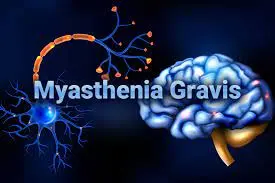
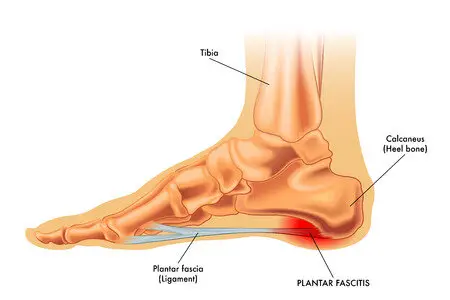
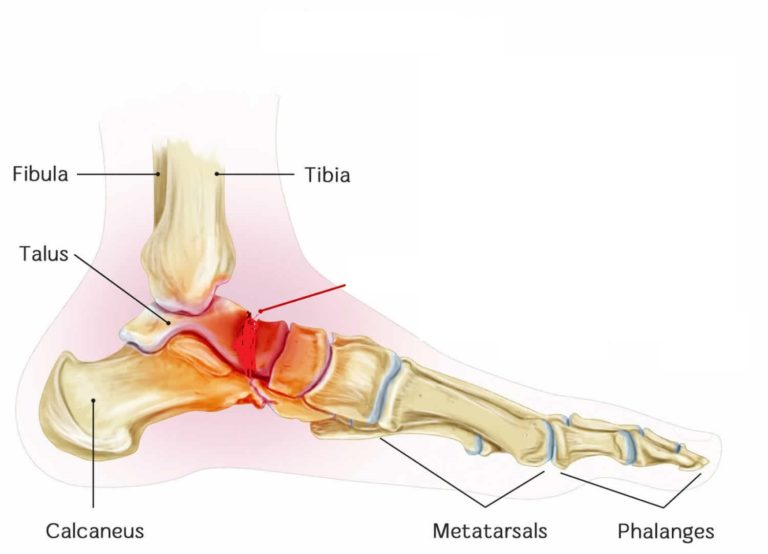
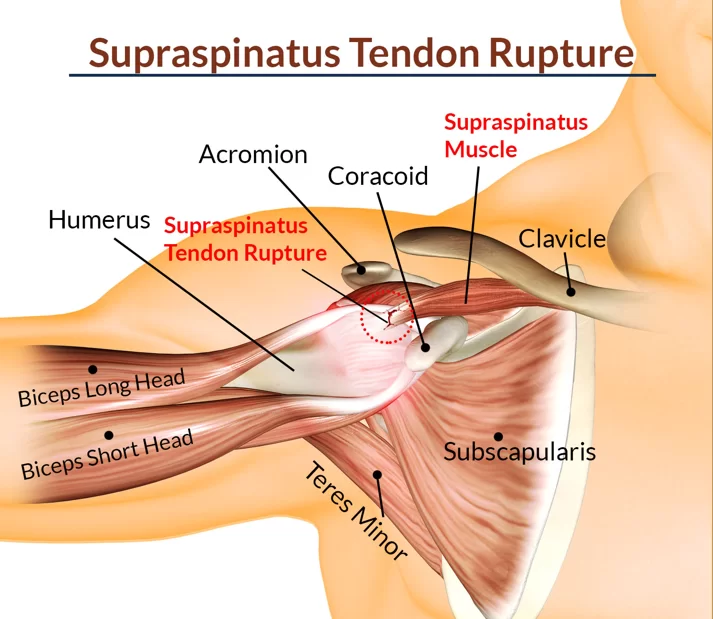


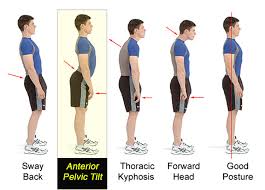
6 Comments